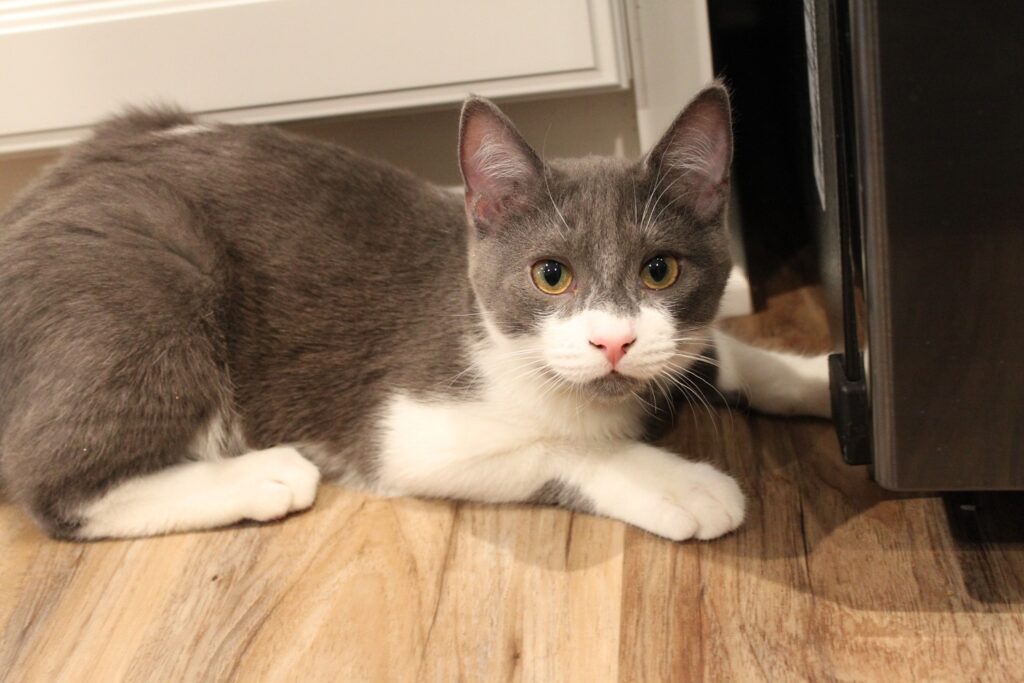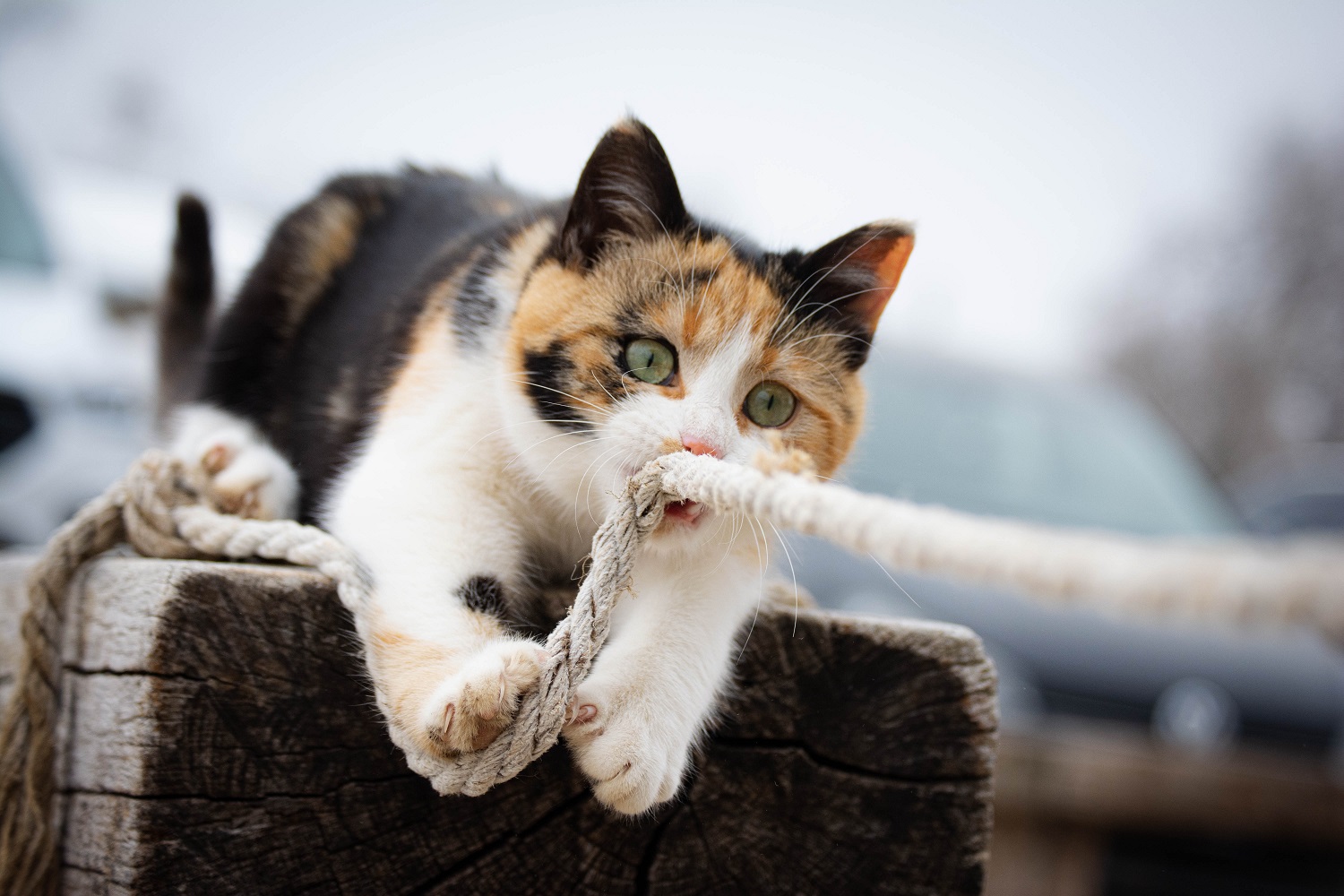If your kitten goes from peacefully napping to sprinting across the house like a furry lightning bolt at 3 a.m., you are witnessing the phenomenon lovingly known as zoomies. These bursts of energy are part adorable, part chaotic, and completely normal.
Zoomies, also called Frenetic Random Activity Periods, are a natural part of kitten development. They look wild, but they serve a purpose. And while your sleep schedule may be suffering, the good news is that this stage does not last forever.
Here is everything you need to know about why kittens get zoomies, how long it lasts, and how to handle those late-night parkour performances.
What Are Zoomies, Really?
Zoomies are intense bursts of energy where your kitten dashes, jumps, skids, climbs, and generally behaves like they have a rocket strapped to their tail. These episodes usually last a few minutes and seem to come out of nowhere.
What you are seeing is your kitten’s brain and body working through a combination of excitement, development, and leftover energy that needs an outlet. It is completely normal and even healthy, especially for young cats who are still figuring out their limbs and limits.
If you have ever watched your kitten leap off furniture, slide across the floor, then freeze like a statue before sprinting again, congratulations. You are living with a perfectly typical feline tornado.
Why Kittens Get Zoomies
There are several reasons kittens experience these random bursts of energy, and most are tied to age and instinct.
1. Energy release
Kittens have a lot of energy in a very small body. When they do not use it through play or activity, it builds up until it has to go somewhere. That somewhere is usually your hallway, your curtains, or your feet under the blanket.
2. Hunting instinct
Even if your kitten has never seen a mouse, they are wired to hunt. Zoomies simulate the chase, helping them develop coordination, balance, and agility.
3. Developmental growth
Your kitten’s nervous system, muscles, and senses are still developing. Zoomies are one way they learn to coordinate their growing body and build confidence.
4. Post-litter box celebration
Some kittens get the zoomies after using the litter box. This may be a release of relief or excitement, especially if they are still learning. Yes, poop zoomies are real.
5. Emotional release
Zoomies can be triggered by excitement, stress, or even boredom. If something exciting just happened, or if your kitten has been cooped up too long, a zoomie burst may follow.
When Zoomies Happen and What to Expect
Most kittens experience zoomies in short bursts several times a day. They often happen during transitional moments, like waking up, after meals, or right before bedtime.
Common zoomie patterns include:
- Dashing from room to room with zero hesitation
- Jumping on furniture like a tiny parkour artist
- Climbing vertical surfaces at full speed
- Chirping, growling, or meowing while running
- Pausing mid-run to stare at nothing before continuing
It can be funny, confusing, and occasionally destructive. But it is also a normal part of kitten life.
Do Zoomies Decrease Over Time?
Yes, the good news is that most kittens grow out of zoomies as they mature. Zoomies usually peak between three to six months of age, then start to taper off by the time your cat reaches one year old.
That does not mean zoomies disappear completely. Even adult cats get the occasional burst of energy, especially if they are playful or have a lot of space to run. But the frequency and intensity tend to decrease with age.
Adult zoomies often look more like a quick burst of excitement rather than the full-blown hallway Olympics you get with kittens.

One moment I’m quietly napping. The next, my paws are a blur. I race around the house like a tiny fur-coated tornado. I must climb, jump, and investigate every nook and cranny. For I am a fearless feline adventurer! The curtains? Consider them conquered. The cat tree? My personal Everest. I’m a lightning-fast, unstoppable force of feline energy! #EmbraceTheZoom #RocketKitty #CatchMeIfYouCan
Joey
How to Manage and Minimize Zoomies
You do not need to stop zoomies entirely, but you can help manage them so your kitten stays happy and your furniture stays intact.
Schedule regular playtime
Kittens need daily interactive play sessions to burn energy in a healthy way. Use wand toys, kicker toys, or feather chasers to mimic the prey-chase instinct.
Keep a routine
Zoomies often happen when routines are disrupted. Feeding, playtime, and bedtime at consistent times help your kitten feel secure and balanced.
Provide vertical space
Cat trees, shelves, and safe climbing areas help your kitten explore and stay active without tearing up your curtains.
Avoid rough play
Wrestling with your hands teaches bad habits. Use toys instead to give them a safe outlet.
Give them a wind-down zone
After zoomies, your kitten needs a calm space to reset. A cozy bed or covered space helps them transition back to nap mode.
Prepare for night zoomies
Tire your kitten out before bedtime with one last play session and a small meal. This helps reduce middle-of-the-night races across your face.
When Zoomies Might Signal a Problem
Zoomies are normal, but if your kitten shows signs of distress, aggression, or frantic behavior beyond a few playful minutes, it may be something else.
Watch for:
- Excessive pacing or inability to settle
- Aggressive biting or growling during zoomies
- Disorientation or bumping into things
- Frequent zoomies with no play or stimulation
In these cases, check with your vet to rule out underlying health or behavioral issues. It is always better to be cautious when something feels off.
Final Thoughts: Zoomies Are Just Part of Growing Up
Zoomies are not a flaw or a behavior problem. They are your kitten’s way of learning, playing, and expressing joy. As wild as they may seem in the moment, they are a short-lived chapter in your cat’s life.
Give your kitten safe ways to explore their energy, enjoy the silliness, and keep your camera ready. You will miss the mayhem one day, even if your lamp shades do not.
Remember, a zoomie-filled kitten is a healthy, happy kitten. Let the sprinting begin.
Sources:
Understanding Kitten Energy https://www.petmd.com/cat/behavior/why-do-cats-get-zoomies
Why Cats Get the Zoomies https://www.humanesociety.org/resources/why-cats-get-zoomies
Kitten Play and Development https://www.icatcare.org/advice/kitten-development-and-play
Managing Feline Behavior https://vcahospitals.com/know-your-pet/cat-behavior-basics
Recent Posts
Explore why cats sleep so much, including the evolutionary reasons and the health benefits they derive from their extensive sleep patterns.
Explore the causes of cat dandruff, its implications, and effective ways to deal with it so your feline friend remains happy and healthy.


